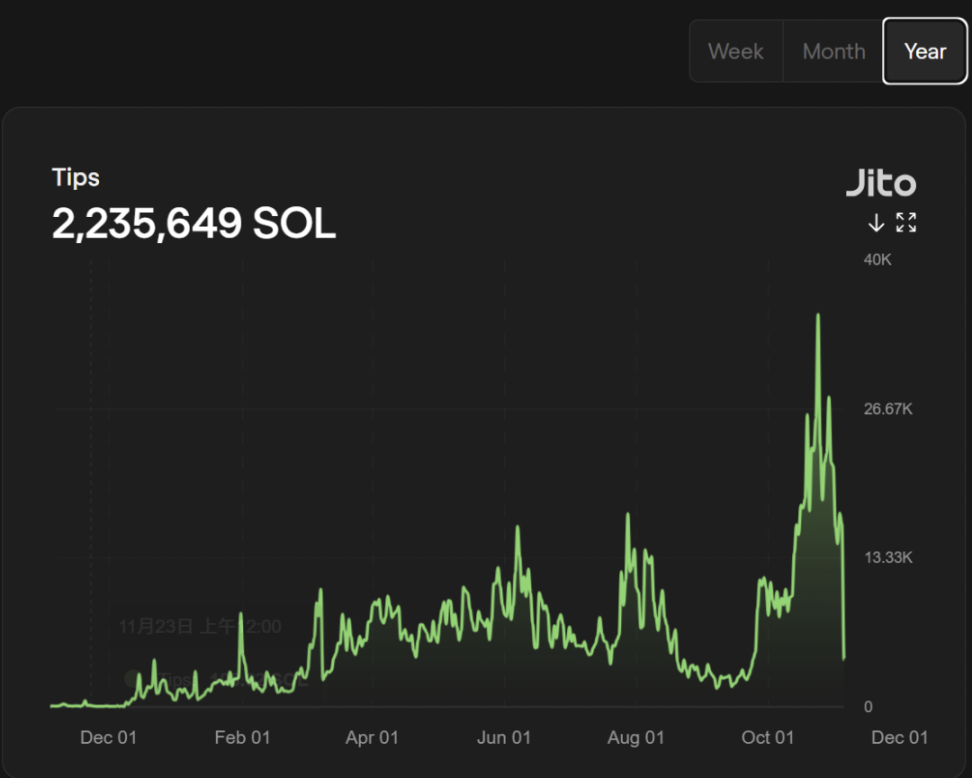Written by: WOO
Background: The myth of getting rich quickly is only seen on social platforms, and losing money is a daily occurrence
In recent months, Solana has been closely tied to Pump Fun and Memecoin. In terms of transaction volume, 36.8% of the entire chain is related to Pump Fun, which also means that the status of the meme track in Solana can be said to be of utmost importance.
Meme coins have brought about a wealth effect, but it is more of a stock game, with players fighting each other. According to the dune board created by @adam_tehc, there is only a 1-2% chance that a token in Pump Fun can be listed on Raydium; another more brutal data is that only 3% of addresses in Pump Fun-related tokens have made a profit of more than $1,000, which means that if you make $1,000 playing Pump Fun memes, then you are better than 96% of players.
The above data also reflects the true face of the wealth effect of meme coins: the myth of getting rich quickly often only appears on social platforms, and losses are the portrayal of most people.
How to find certain opportunities in the turbulent meme market? You can change your mindset and not directly participate in PVP, but think about whether there are opportunities for operation in other tracks when memes are prevalent.

Jito, a potential winner of the meme craze
Conclusion first: the longer the meme craze on Solana continues, the higher the jitoSOL interest rate will be.
Currently, memes have become the DNA of Solana. The meme coins issued by Pump Fun continue to rise every day. The transaction volume of Pump Fun related tokens accounts for more than 40% of the total volume chain, and there is a growing trend.

What impact does this have on the Solana ecosystem? For meme coins with low liquidity and low market value, transaction speed is of paramount importance. If you buy slower than others, you may end up in the dilemma of taking over at a high price.
Amid FOMO sentiment and surging trading volume, Solana MEV attacks are profitable and the captured value is growing.
MEV refers to adding, deleting, and changing the order of transactions in a block. Unlike Ethereum, Solana does not have a public memory pool. Due to the characteristics of the consensus mechanism, the cost of participating in MEV activities is relatively low. MEV robots cannot manipulate the order of transactions based on fees, and can only compete on latency and speed. Because only by reading the status first can the transaction be successfully executed.
Because of the low transaction cost and the first-in-first-out transaction processing mechanism, there are many Spam Transactions on Solana, and these spam transactions will take up a lot of Solana block space and cause Solana to crash.
Jito is the Solana MEV infrastructure provider. They launched the client and run an off-protocol memory pool. Seekers submit transaction packages that they wish to include to generate profits, as well as bids for these transaction packages, which are then submitted to the validators running the client. The highest bidder wins, and their transaction packages are submitted to the chain, creating an additional source of income for the validators and their stakers. 100% of the tips paid are paid to the validators and their stakers.
Therefore, for Jito, the higher the Solana transaction volume, the more MEV revenue Jito can capture, and the more revenue will ultimately be distributed to stakers.
The interest rate of jitoSOL comes from staking + MEV rewards. Thanks to the surge in MEV income, the current annualized interest rate of jitoSOL is about 8%, far exceeding stETH's 3%, which also gives users arbitrage space. So how to operate?
(Since the beginning of this year, Jito MEV tips have reached 2,235,649 SOL, worth about 357 million US dollars, and it can be seen from the chart that it continues to rise)

Homemade Solana version of Ethena, income source = staking + funding rate
How to execute?
Use three quarters of the funds to buy SOL, and then pledge SOL as jitoSOL through Jito to earn 8% APY. Also deposit another quarter of the funds into a centralized exchange, enable triple leverage, short the same number of SOL, and earn funding rate interest.
* Assuming SOL rate is 0.01%
Assuming you have 120,000 USDT and want to earn stable interest, the profit formula is as follows:
90,000*8%(jitoSOL APY) + 30,000*3(triple leverage short)*0.01%*3*365 = 7,200 + 9,855 = 17,055
17,055/120,000 = 14.2%
The annual interest rate is about 14%
If the Solana meme continues to spread, the market will first pay attention to SOL, which can increase the funding rate and break through the relatively neutral sentiment of 0.01%. Jito's MEV value capture can also increase the APY of jitoSOL. Using this Delat Netural strategy, the annualized interest rate is expected to exceed 20%.
Conclusion: Keep an eye on the popularity of memes and look for certain benefits
The above is just an introduction to the most basic Delat Netural strategy. Advanced strategies can be combined with Kamino, a lending protocol on SOL, or use Jito’s recently added Restaking and other features to increase yields.
The advantages of this strategy are safety and high gastric tolerance:
- jitoSOL is the largest LST on SOL, with good safety and not easy to get off anchor
- SOL is a mainstream currency, most centralized exchanges have good depth and high strategy appetite
On the contrary, if the crypto market trend is not as expected and the funding rate turns negative, it will erode the strategy returns. Therefore, this strategy is not a mindless way to make money, and you still need to pay close attention to market conditions.











